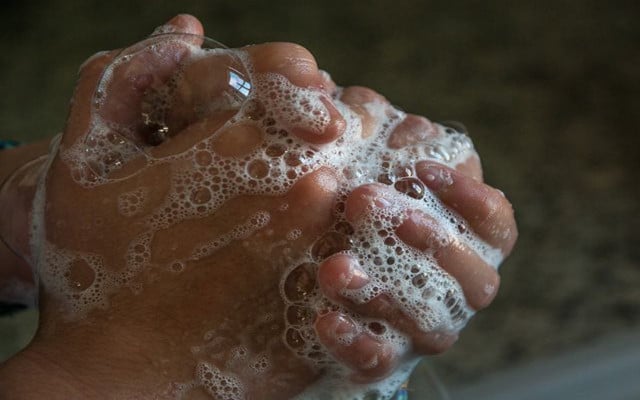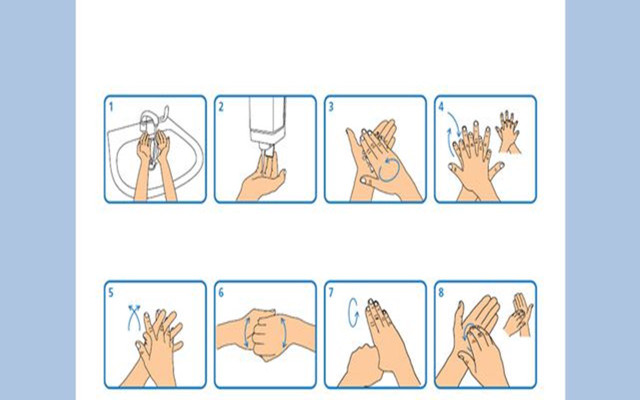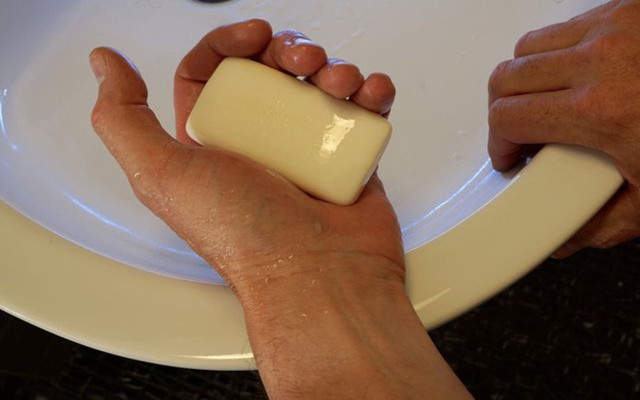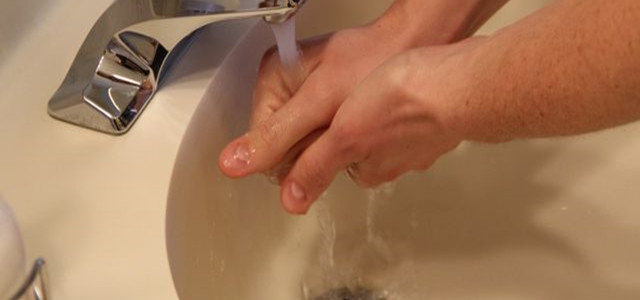Knowing how to wash your hands properly is crucial to protect ourselves from many infections – such as the coronavirus. Follow these simple hand washing steps to make sure you are doing it right.
It’s up to all of us to slow down the spread of the coronavirus. A particularly simple measure is to wash your hands properly. This way you can reduce the risk of infection – which is why everyone should know how to follow some simple hand washing steps.
Of course, that applies to seasonal outbreaks of the cold and flu, too. According to the Centers for Disease Control and Prevention (CDC), about 30% of diarrhea-related illnesses and 20% of respiratory infections, such as colds and flus, can be prevented by washing your hands thoroughly.
Pathogens easily get onto our hands from surfaces and items we touch and enter our bodies through the mucous membranes of the eyes, nose and mouth.
Common sources of germs are:
- Public transportation
- Supermarkets and other shops
- Handshaking
- Waiting room at the doctor’s
- Daycare centers and schools
If we know how to wash our hands properly and thoroughly, we can significantly reduce the risk of infection.
Hand Washing Steps: How to Wash Your Hands Thoroughly
The most common mistake when washing your hands: washing your hands too shortly. Your hands may look clean, but germs are invisible to the naked eye. To remove most of them, the CDC recommends scrubbing your hands for at least 20 seconds.

To make sure your hands are clean after, follow these simple hand washing steps:
-
Soaping: To wash your hands properly, be sure to lather them thoroughly using enough soap. First rinse your hands briefly with clean, running water and then distribute the soap evenly. The backs of the hands and the spaces between fingers are often neglected. Don’t forget your thumbs, fingertips and fingernails!
Germs can quickly collect under the fingernails. If you want to be very thorough, or have to remove coarse dirt, you can also clean your nails with a nail brush**.
Read on: Homemade Soap Recipes: How to Make Your Own DIY Soap
-
Rinsing: Now rinse your hands well under clean, running water. Rinse for 10 seconds to make sure your hands are as germ free as possible.
- Drying: Since pathogens thrive in a damp environment, be sure to dry your hands thoroughly with a clean, dry towel.
How to Avoid Getting – or Spreading – the Coronavirus
Now, during the coronavirus scare, it is especially crucial that we regularly and properly wash our hands. The World Health Organization (WHO) strongly recommends frequent and thorough handwashing to protect yourself and others from contracting the respiratory illness Covid-19.
For those of us who have a hard time remembering how long to wash your hands for: Try singing “Happy Birthday” twice in a row. Or, at washyourlyrics.com, you can create a hand washing steps infographic based on the lyrics of your favorite song! Either way, keeping your hands clean is – hands down – the best way to prevent the transmission of the disease.



Hand Washing Steps: What You Should Know
- Water Temperature: The temperature of the water you wash your hands with makes no difference when it comes to eliminating germs. So, it is just as effective to clean your hands with cold water as it is with warm.
- Soap: Even though some of the pathogens can be removed from the skin without soap, washing your hands with soap is significantly more effective. Soap removes microorganisms from the oily layer on the skin, which is not possible using only water.
- Disinfecting Your Hands: If soap and water are not available, you can use an alcohol-based hand sanitizer containing at least 60% alcohol. Over-the-counter antibacterial soaps, on the other hand, have not been proven more effective than normal soap when it comes to preventing illnesses. Plus, they contain triclosan, an antibacterial chemical which can negatively affect our health and the environment.
You remove 90 to 99 percent of all germs when washing your hands with normal soap – so follow our hand washing steps whenever possible. That being said, don’t overdo it. Washing your hands too often can damage them, especially in the cold season when dry heater air puts additional strain on the skin. It is best to wash your hands only with all-natural organic soap and care for them with organic hand lotion.



Want to make your own soap? Check out our homemade soap recipes!
For more ideas on how to make the most of the coronavirus lockdown read: Coronavirus: 10 Tips on How to Make Best Use of Your Time at Home.
This article was translated from German into English by Ruth Wachsmuth. You can view the original here: Hände waschen: So werden die Hände richtig sauber.
Important Information regarding Health-related Topics.
** Links to retailers marked with ** or underlined orange are partially partner links: If you buy here, you actively support Utopia.org, because we will receive a small part of the sales proceeds. More info.Do you like this post?






